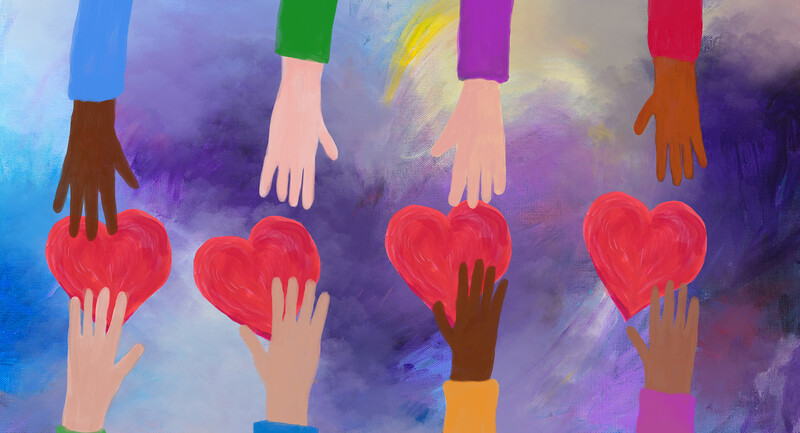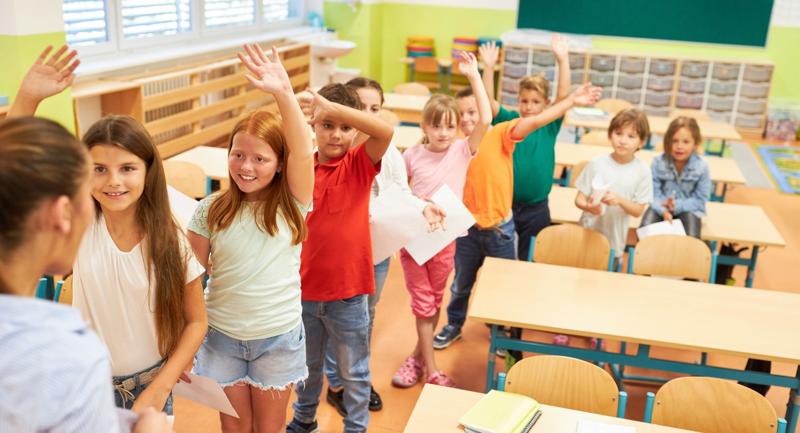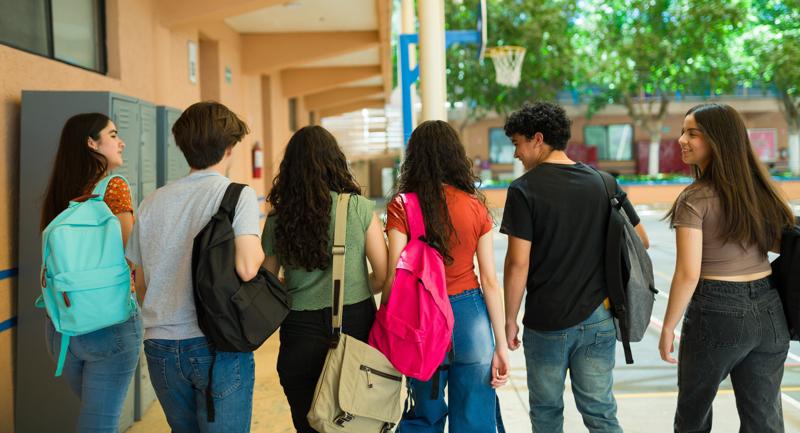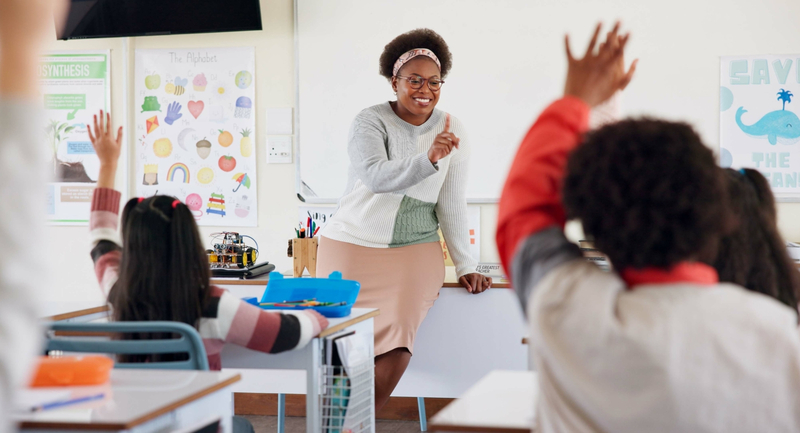The 2021-22 school year began with excitement—following 18 months of the COVID-19 pandemic, I was going to be back in a classroom again! I walked through the halls of my middle school, taking in the sights of recently waxed floors, colorful signs with welcome back messages, and my beautifully decorated classroom. I let out a sigh of relief—we were going back to normal.
But it didn’t take me long to realize how wrong I was. Students were pushing each other into lockers, grabbing other people’s belongings and throwing them down the hall, and even hitting each other as they moved from classroom to classroom. Some were found hiding in stairwells and bathrooms and even running off campus.
Like many educators, I was utterly unprepared for the first few weeks of in-person learning. The personal and collective traumas students had experienced led to disruptive behaviors across the school and inside the classroom, resulting in lost instructional time and an inability to create a safe community.
There was an acute need to address students’ behavior and safety. In 2022, 87 percent of public schools reported the pandemic had negatively impacted student social-emotional development, noting “increased incidents of classroom disruptions from student misconduct (56 percent), rowdiness outside of the classroom (49 percent), [and] acts of disrespect towards teachers and staff (48 percent).”
Many students and educators were stuck in a trauma loop of fear and immobility, unable to regulate our nervous systems.
As students (and educators) returned to the classroom following remote learning, we had not necessarily developed the tools needed to process feelings of grief, anger, and anxiety from a lack of control during the pandemic. In response, many of us were stuck in a trauma loop of fear and immobility, unable to regulate our nervous systems.
In The Body Keeps the Score, psychiatrist Bessel Van Der Kolk writes that young people who exhibit disruptive behaviors as a result of trauma "are unlikely to be brought to reason by verbal reprimands or even suspension . . . these kids’ disturbing behaviors started out as frustrated attempts to communicate distress and as misguided attempts to survive.” Though this school year has seen an increased emphasis on preventing disruptive student behavior, the response has largely reactive and disciplinary, focusing on loss of privilege, detention, and suspension. Schools report feeling limited in their ability to prevent disruptive behaviors due, in part, to restricted funding and inadequate teacher training in classroom management.
As part of a proactive approach to behavior management, Van Der Kolk explains: “The critical challenge in a classroom setting is to foster reciprocity: truly hearing and being heard; truly seeing and being seen by other people.”
With a more informed understanding of trauma response, I began to view our “new normal” as an opportunity to recalibrate and focus on what really matters in the classroom.
Small Changes for Big Impact
To begin assessing what was most needed to recalibrate our classroom, I decided to have conversations with my students about what could be improved. I knew this was a gamble because I was asking them to be honest and vulnerable about the challenges they were facing, and if I were unable to adequately address those issues, I might lose their trust. When I took the time to listen, however, students bravely shared many of my same concerns. They, too, felt there was a lack of compassion, empathy, and consistency in the classroom, and each student had been negatively impacted by this.
In addition to this discussion, I had students complete an anonymous survey so that they could privately share their feelings. The survey asked students about their level of joy and safety in the classroom, respect and caring by the teacher, and their ability to learn and be successful in class. Based on the discussion, the survey data, and my own trauma research, I began implementing strategies to move us out of the trauma loop and into a place of safety by focusing on three main areas: (1) Establishing clear and consistent expectations; (2) equipping students with self-regulation strategies; and (3) increasing opportunities for autonomy, choice, and play.
The specific changes listed below, while small, made a huge impact on the sense of community and safety in our classroom. These changes included:
- Collaboratively developing norms with the students and posting them in the classroom.
- Beginning class with a consistent routine that included a moment of silence and an opportunity to share joys and concerns.
- Developing a classroom goal and allowing students to determine the reward—then following through.
- Incorporating opportunities for students to listen to music, choose their seats, and choose their partners.
- Adding cool-down spaces throughout the classroom—a puzzle on one side of the room; a desk away from the group with a whiteboard, markers, and coloring sheets; and a space under a desk with a small rug, blocks, and a puzzle game (this space was used most frequently—even though I teach middle school students!)
With sustained persistence and commitment, we were on our way toward building a trauma-sensitive classroom.
Within eight weeks of making these changes, students completed another anonymous survey in which they self-reported a 22 percent increase in believing the classroom setup allowed them to learn and an 11 percent increase in being able to meet the learning goals they set for themselves. There was a 3 percent increase in students feeling safe in the classroom and a 15 percent increase in students believing the teacher respected them. With sustained persistence and commitment, we were on our way toward building a trauma-sensitive classroom.
New Classroom, Same Needs
Feeling reenergized and empowered by these results, I set out to replicate this process with a first-year teacher who had reached out for guidance on how to address disruptive behaviors in his classroom. After a classroom observation, discussions with both the teacher and his students, and an anonymous survey of his students, we again identified classroom needs and potential solutions. These students’ needs were similar to those identified in my classroom. They centered on clear and consistent expectations; self-regulation strategies; and inclusion of autonomy, choice, and play.
The teacher implemented a few changes designed to address these needs and, after only a four-week period, students reported a 19 percent increase in meeting the learning goals they set for themselves and a 23 percent increase in the class being a safe space for students. One hundred percent of the students in the class felt the teacher respected them.
The small changes in this classroom included:
- Creating a consistent routine to begin the class, which included a timer on the front board counting down to the start of class. Students were given choice and autonomy in how they spent those first few moments.
- Agreeing upon and posting two non-negotiable expectations: raising their hand to answer questions and using kind words when speaking with and to their classmates.
- Offering a reward that students were guaranteed if they were able to follow the non-negotiable expectations for the week.
Although the specific changes in my classroom and my colleague’s were different, the needs of our students were the same. They thrived when there were clear and consistent expectations; when they were given the opportunity and instruction to develop self-regulation skills; and when autonomy, choice, and play became a part of the classroom culture.
Being able to identify the needs in a particular classroom and develop specific interventions to address those needs can lead to a cohesive classroom community in which students felt safe and are better able to meet expectations.
Ongoing Trauma-Sensitivity in Classrooms
These changes required me not only to give up a degree of control to the students over how the classroom operated but also to implement trauma-informed strategies that were not widely embraced in my school. This process was uncomfortable because the stakes were high: If this was successful, my students would benefit from a sense of belonging, agency over their learning, and self–regulation of their emotions; if unsuccessful, however, not only would my students not receive these benefits but it could discourage other educators from implementing trauma-informed practices in their own classrooms. Fortunately, my concerns were not actualized, and in the end, my students did receive the rewards I had promised.
As our understanding of trauma’s impact on learning continues to grow, our practices need to evolve so that we are truly cultivating trauma-sensitive classrooms.
The impact of trauma has always affected individual students and their ability to learn. But the uniqueness of the pandemic was that it created the potential for many more students to have suffered trauma. The evidence of this collective trauma can be seen in classrooms like mine where, instead of having a few students struggling, there are now whole classrooms grappling with trauma. As our understanding of trauma’s impact on learning continues to grow, our practices need to evolve so that we are truly cultivating trauma-sensitive classrooms.








